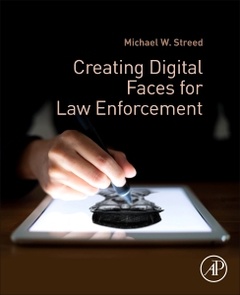Description
Creating Digital Faces for Law Enforcement
Author: Streed Michael W.
Language: English
Keywords
Adobe Photoshop; Aging; Anatomy; Appointment; Assault; Barriers; Bertillon; Business; Camera; Catalog; Child; Cognitive interview; Communication; Compare; Composite pencils; Composite; Construct; Corel Painter; Corel; Court; Defense; Department; Detective; Digital edit tools; Digital; Display; DNA; Elderly witness; Evaluate; Expert; Eyewitness; Face; Facial composite software; Facial composite; Facial recognition; Facial; FBI; Focus; Frontalis; History; Identification; Identify; Identi-Kit; Image; Interview; LGBT; Limitation; Match; Media; Memory; Mentor; News; Observation; Organization; Painter; Pen; Pixels; Police; Portrait; Process; Professionalism; Proportion; Prosecution; Psychology; Rapport; Refine; Relationship; Remote; Rotation; Schedule; Sexual; Sketch; SketchCop FACETTE; Skull; Social; Software; Spatial; Specialist; Strategy; Stylus; Subpoena; Support; Surveillance; System; Tablet; TabletWacom; Technician; Television; Testify; Tools; Trauma; Trust; Victim; Wacom; Weapon; Witness
418 p. · 19x23.3 cm · Paperback
Description
/li>Contents
/li>Biography
/li>Comment
/li>
Today, law enforcement requires actionable and real-time intelligence; 24 hours a day, seven days a week to help respond to cases efficiently. When evidence is lacking in a case, law enforcement officers are often times left to rely on eyewitness descriptions. In order to quickly disseminate facial composites to news outlets and social media, law enforcement needs to rely on every tool available; including traditional forensic artists and advanced facial composite software.
Creating Digital Faces for Law Enforcement provides the proper foundation for obtaining key information needed to create effective facial composites. There are two main methods to create a facial composite, first through traditional forensic art techniques and second by using commercially developed facial composite software. Traditional forensic art has advanced from pen and paper to more enhanced digital tools. This text reviews the development of digital tools used by the forensic artist describing each tool in detail. Creating Digital Faces for Law Enforcement is the first text of its kind to address the creation of digital sketches for forensic artists and software-driven sketches for non-artist/technicians.
1. Pencils to Pixels2. Getting Started3. When, Where, Why, and How?4. The Eyewitness5. The Interview6. The Human Face7. Courtroom Testimony8. Lights, Camera…Facial Composites in the Media9. Digital Tools10. Let's Make Faces11. Change-a-Face12. Putting It All Together13. Facing the Future
Michael W. Streed is an internationally-recognized police sketch artist based in Southern California. For 35 years he has blended his rich law enforcement experience and artistic skills to provide forensic facial imaging services to some of the largest, most diverse, police agencies in the United States, including the Los Angeles and Baltimore City Police Departments. During his distinguished law enforcement career Michael investigated a variety of violent crimes, sexual assaults and juvenile-related crime. This helped him develop highly-specialized interview skills which he adapted for his role as a police sketch artist. Michael’s unique perspective on eyewitnesses, coupled with his superior communication skills made him one of Southern California’s most sought after police sketch artists. This led him to successfully develop police sketches for many high-profile cases such as: the Samantha Runnion murder, the Anthony Martinez murder, the Baton Rouge serial killer, and Orange County’s (CA) Fortune Teller murder.
Michael has long been recognized for his contributions to law enforcement through his use of forensic art. He has received several prestigious awards, including: the Orange Police Department Award of Merit, United States Congressional Certificate of Recognition, The American Legion Award and a nomination for the Orange County Sheriff’s Department Medal of Valor. Many of his cases have been profiled on such shows as: ‘America’s Most Wanted’ and ‘Unsolved Mysteries’. He has also been profiled in several major newspapers and has been interviewed on: CNN with Connie Chung, Fox News Channel, ABC’s 20/20 with Barbara Walters and ID Discovery’s show “Wicked Attraction: Bad Fortune. Michael is also a noted author and popular lecturer on the subject of facial imaging/identification and true crime. Michael recognized law enforcement’s need for a digital composite imaging solution. He created SketchCop FACETTE Face Design System, an innovative software prog
- A step-by-step guide addressing the creation of digital, software-driven, sketches for non-artist technicians
- Includes descriptions supported by both photographs and video demonstrations to assist the reader in better understanding the process
- Written by an internationally-recognized police sketch artist with over 35 years of experience
- A companion website page will host author created / narrated videos for reader access
These books may interest you

The Police Composite Sketch 116.04 €



